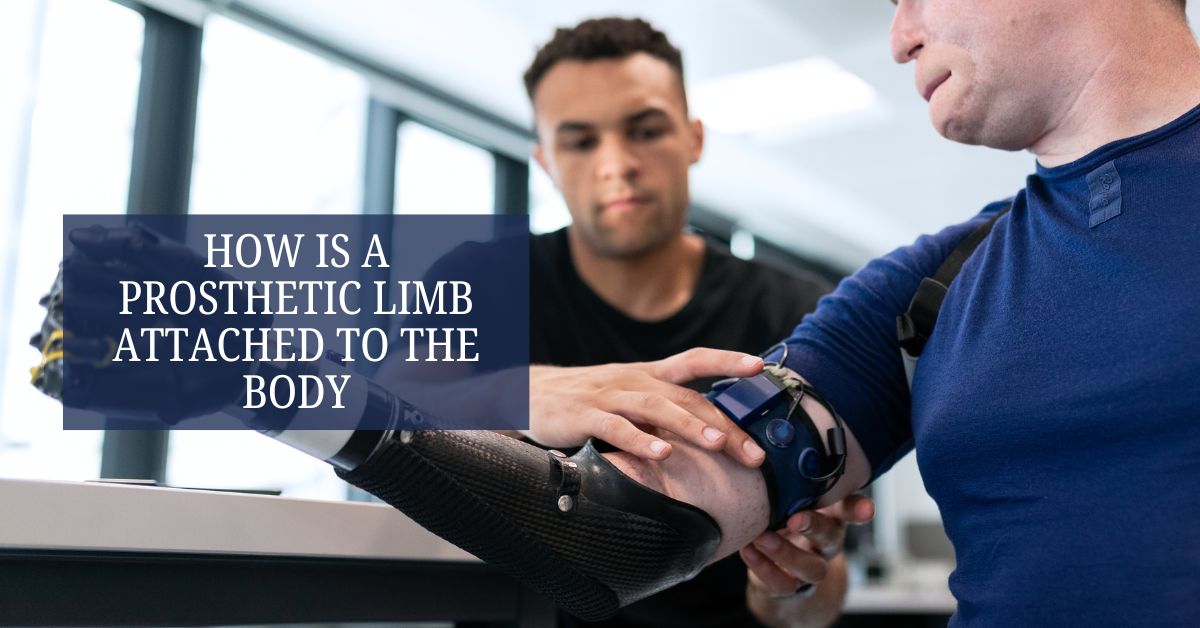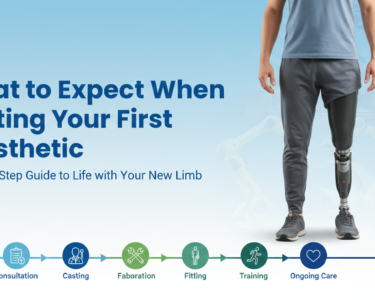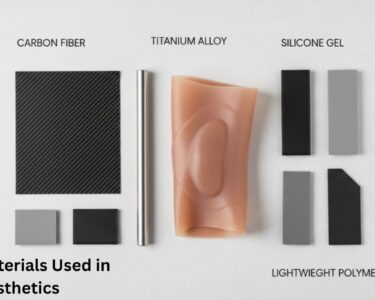Prosthetic limbs have changed countless lives by helping people regain mobility, independence, and confidence after an amputation. But have you ever wondered how these artificial limbs stay securely attached to the body?
Attaching a prosthetic limb is a very personal and carefully planned process. It involves not only physical comfort and stability but also medical science and proper technology. In this article, we’ll explain in simple terms how prosthetic limbs are attached, what types of systems are used, and how they work for different people.
Understanding the Basics
Before we talk about attachment, it’s important to understand that a prosthetic limb is custom-made for each person. No two limbs or residual limbs (the remaining part of the limb after amputation) are the same, which is why fittings and attachment systems are personalized.
The part that connects the prosthetic to the body is called a socket. The socket fits over the residual limb and serves as the main link between the body and the artificial limb.
Now, let’s explore how these connections are made.
Common Methods of Attaching a Prosthetic Limb
There are several ways to attach a prosthetic limb to the body. The method depends on the location of the amputation, the person’s health, the type of prosthetic limb, and their personal comfort.
Here are the most common types of attachment systems:
1. Suction Suspension System
This is one of the most commonly used systems today.
- The socket is designed to form a tight seal around the residual limb.
- A gel liner is often worn over the limb for comfort and to create a good seal.
- When the prosthetic limb is worn, the air inside the socket is pushed out through a small valve.
- This creates a suction effect, which holds the limb securely in place.
Benefits:
- Provides a snug and comfortable fit.
- Allows better control of the limb.
- No need for bulky straps.
Things to Know:
- Good skin condition and limb shape are important for suction to work well.
2. Pin Lock System
This system uses a liner with a locking pin at the bottom.
- The person wears a gel liner over the residual limb.
- The liner has a metal pin at the bottom.
- When the limb is inserted into the socket, the pin locks into place.
- To remove the prosthesis, the person presses a release button.
Benefits:
- Simple and secure locking system.
- Easy to put on and take off.
Things to Know:
- Some people may feel pressure on the bottom of the limb.
- Proper alignment is necessary to ensure comfort.
3. Vacuum Suspension System
This is an advanced version of the suction system.
- It uses a vacuum pump to create negative pressure inside the socket.
- The vacuum provides even stronger suction and holds the prosthetic more firmly.
Benefits:
- Very stable and secure fit.
- Reduces movement inside the socket, which helps prevent skin irritation.
- Can improve blood circulation in the residual limb.
Things to Know:
- More expensive and needs regular maintenance.
- Often used by active users who need high performance.
4. Sleeve Suspension
This is usually used in combination with other systems.
- A neoprene or silicone sleeve is worn over the socket and rolled onto the thigh or upper limb.
- It creates extra suction and holds the prosthesis in place.
Benefits:
- Adds another layer of security.
- Comfortable and easy to wear.
Things to Know:
- Can feel warm or bulky in hot weather.
- Needs to be replaced regularly as it wears out.
5. Harness and Strap Systems (Mostly for upper-limb prosthetics)
For upper-limb (arm or hand) prosthetics, harnesses and straps are often used.
- Straps are worn around the shoulders or chest to hold the prosthetic arm in place.
- Some systems allow movement of the opposite shoulder to control the artificial limb.
Benefits:
- Offers control for people using body-powered prosthetics.
- Adjustable and supportive.
Things to Know:
- Can be tricky to put on at first.
- May feel bulky for some users.
What Role Does the Socket Play?
As mentioned earlier, the socket is the most important part of the prosthetic interface. A poorly fitted socket can lead to discomfort, skin sores, or pain. That’s why prosthetists (the professionals who design and fit prosthetics) take great care in shaping and adjusting the socket.
Today, many sockets are custom-molded using digital scanning or plaster casting to perfectly fit the residual limb. Some sockets are even made from carbon fiber or thermoplastics to offer strength and flexibility.
The Importance of a Good Fit
No matter how advanced the attachment system is, the comfort and success of a prosthetic limb depend on a good fit. Here’s why:
- A good fit reduces skin problems.
- It prevents unwanted movement or slipping.
- It helps users walk or move more naturally.
- It improves confidence in using the prosthetic.
Over time, the shape of the residual limb can change, especially in the first year after amputation. That’s why regular check-ups and experienced prosthetics manufacturers are important. They can make necessary adjustments or provide a new socket if needed.
Can a Prosthetic Be Implanted Directly?
In some rare and advanced cases, a process called osseointegration is used. This involves surgically inserting a metal implant into the bone of the residual limb, and then attaching the prosthetic limb to that implant.
- This eliminates the need for a socket.
- It can offer better control and comfort.
- However, it requires surgery and is not suitable for everyone.
Final Thoughts
Attaching a prosthetic limb to the body is more than just putting it on—it’s a carefully planned process involving technology, custom design, and medical science. From suction systems to locking pins, each method offers a unique way to make the prosthetic feel like a natural part of the body.
With the help of skilled professionals and proper follow-up care, most people can find a system that suits their lifestyle, comfort level, and mobility goals.
Whether someone is walking, working, or simply living life with confidence, the right attachment system is a key part of that journey..
So, are prosthetics safe for diabetic patients? Yes, they are—but only with proper care, expert guidance with trusted prosthetics manufacturer in India and ongoing attention to limb health.Diabetic users need to be more cautious than others, but with the right support team, good hygiene, and regular check-ups, they can safely wear and benefit from a prosthetic limb.
Disclaimer: The information provided in this article is for general knowledge and educational purposes only. It should not be considered medical advice, diagnosis, or treatment. Prosthetic solutions vary based on individual needs, medical conditions, and professional recommendations. Always consult with a certified prosthetist, healthcare provider, or medical professional for personalized advice and the best prosthetic options for your specific situation.








